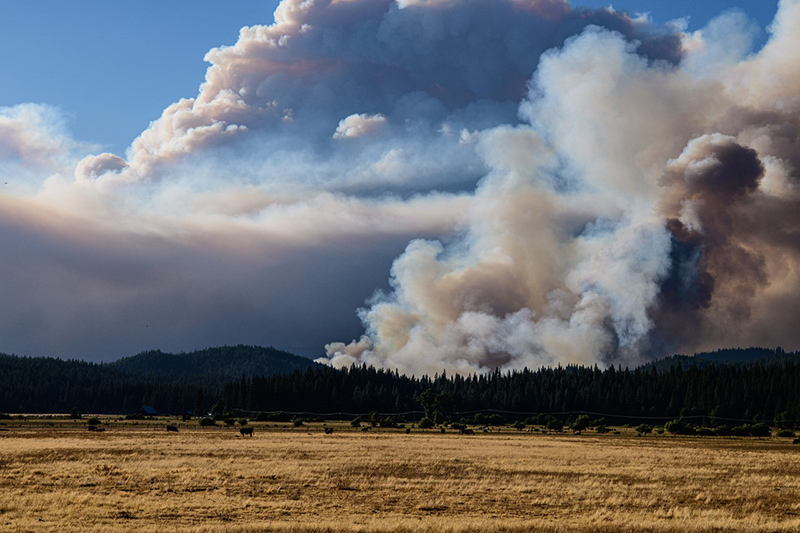
California’s Dixie Fire has burned nearly 1 million acres since mid-July, and an electric cooperative serving portions of the territory scorched or threatened by the massive wildfire is working hard to keep electricity flowing to its members.
“Our area is under a state of emergency, as declared by our governor, and for the last seven weeks, we have been operating on our backup power supply,” said Emily Compton, community relations manager for Plumas-Sierra Rural Electric Cooperative. “We’ve had to add emergency generation to our system in the form of 2-megawatt generators at two of our substations.”
The Portola-based distribution co-op in northeast California has been on backup power since July 21 and kept mobile generation running with regular deliveries of diesel fuel that drivers hauled up sometimes smoky roads to reach its substations.
The co-op, which serves about 8,000 meters in the brushy and forested mountain region northwest of Reno, Nevada, has faced ongoing transmission challenges since the fire began July 14. One investor-owned utility’s transmission line serving its system from the west was destroyed by the flames, and a second connected to its system from the east lacks the capacity to meet its total demand. Two transmission feeds from Pacific Gas and Electric are currently out of service because of the fire.
Another blaze, the Beckwourth Complex Fire, burned more than 105,000 acres, and the co-op’s line crews and contract personnel actively fought that fire to protect one of the co-op’s substations from the flames.
Damage in some areas is still being assessed, but the two fires have burned more than 135 of the co-op’s distribution poles, 23 of its transmission poles and more than 17 miles of its fiber network, which supports both co-op communications and its broadband subsidiary, Plumas-Sierra Telecommunications. As much as 5,000 feet of conductor have been lost, and much of the hardware and materials needed to make repairs have also been destroyed.
“The amount of damage and the speed at which the fires spread were stunning,” said Robert Marshall, the co-op’s general manager, adding that some co-op crews had to be evacuated as they were repairing the system.
Just as many co-ops actively plan for hurricanes, flooding and ice storms, Plumas-Sierra REC includes fire mitigation and alternative generation in its strategic planning.
The co-op participated in development of the $21 million High-Sierra Cogeneration plant to add 6 MW of capacity to its system and commissioned a 2.5 MW solar array, in operation at the Sierra Army Depot in Herlong, California, since 2018. Marshall supports development of more biomass generation to help reduce the amount of available fuel on the forest floor.
“These improvements and the emergency generators have allowed us to provide power with only a few short outages,” said Compton, adding that members have been alerted to expect service disruptions between 9 p.m. and midnight when mobile generators are shut off so they can be refueled and serviced safely.
Crews have been riding the lines when outages occur to ensure that tree limbs or other debris don’t add to the fire risks once lines are re-energized.
“Those regular patrols allow us to visually inspect our system for anything that could potentially contribute to the fire threat,” said Compton.
System control and data acquisition team members have stepped up voltage stability monitoring to ensure system reliability from backup generation sources. And member services and communications team members have used the co-op’s website, social media channels and phone contacts to stress conservation among members to reduce the possibility of rolling blackouts.
Senior operations personnel continue to work with the Northern California Power Agency on backup power initiatives across the region, said Marshall.
“In the long run, we need an investment by the federal government on the fire management and prevention side to prevent this from happening again,” he said.
Derrill Holly is a staff writer for NRECA.